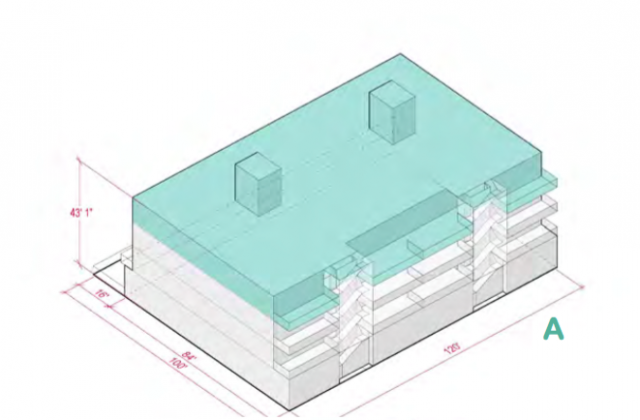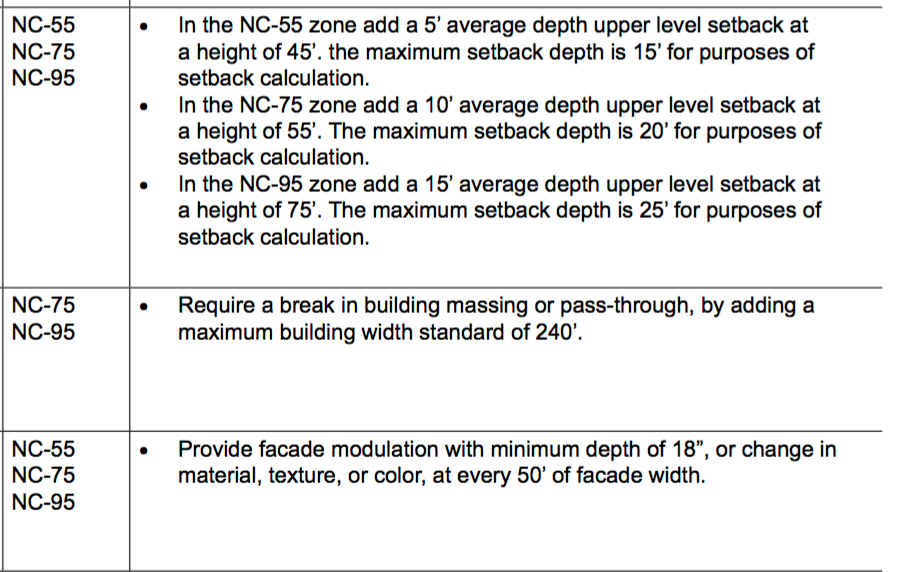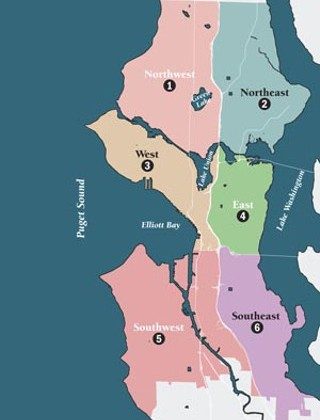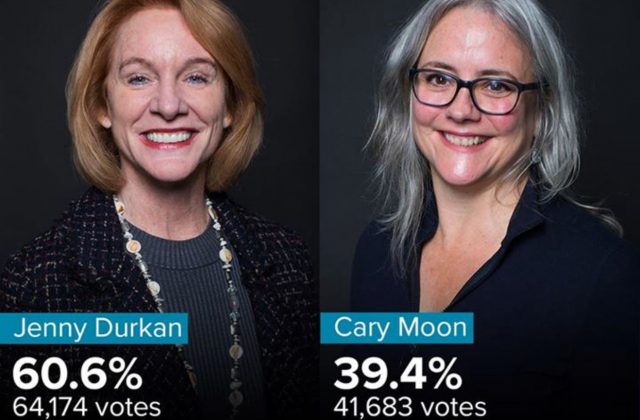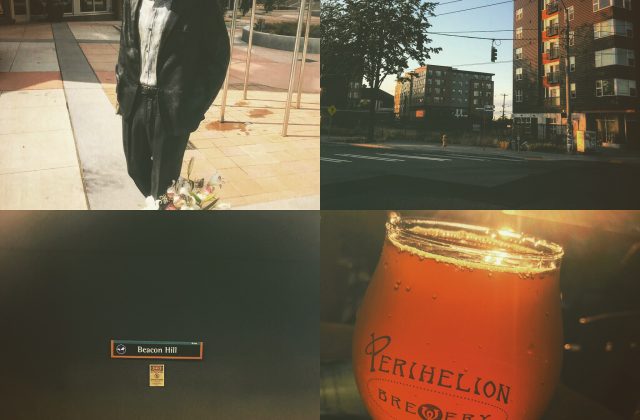Mandatory Inclusionary Zoning Isn’t Just Bad Economics, It is Bad Design
If I’ve told you once, I’ve told you a thousand times: trying to make something cheaper by making it more expensive to produce is folly. More specifically, trying to make housing less expensive by adding fees, fines, and inclusionary requirements the way the City’s proposed Mandatory Inclusionary Zoning (MIZ) scheme does won’t make housing less expensive. The City’s brand of MIZ called Mandatory Housing Affordability (MHA) will add costs in the form of fees and additional costs that will make many projects infeasible, and when they do work, it will because the price goes up for renters and home buyers. And in the end, the scheme is illegal. As if all that was not enough, the MHA proposal will cause housing to be less efficient and mandate bad design.
If you take a look at page 63 of the recent document dump by outgoing Mayor Burgess and Councilmember Rob Johnson, you’ll see that a whole bunch of new prescriptive rules impacting housing design are being added to the upzone proposal, creating hassles for architects and developers trying to deliver affordable housing products to needy renters and buyers. Remember how we challenged Councilmember O’Brien on this whole scheme, reminding him that he and his colleagues has creating a bunch of damaging set backs and unit size boosting requirements in the low-rise legislation he pushed through Council? Remember how we knew O’Brien would have to cave and capitulate to angry neighbors (who ironically hate his guts anyway because of his noblise oblige on people living in cars)? And remember how O’Brien got caught up in a mess saying he’d upzone over here, but not so much over there and then backtracked on Facebook?
I sure do.
Here’s how he solved the problem.
The proposed upzones in Neighborhood Commercial (NC) zones will have to:
Ensure light and air access to public rights of way, and compatibility of street facing building scale, as height limits are increased.
and
Encourage human scaled buildings, and compatibility of in ll development with context.
and
Encourage design interest and human scale in large scale building facades.
We’ve heard this pablum, garbage language before haven’t we: “light and air” and “human scale” is code for project killing set backs, constraints on the size of buildings and lot coverage, and ultimately, a recipe for bigger and fewer and more expensive apartments and houses.
These upper level setbacks are now prescribed in all zones along with new requirements for material and the ever pointless, “modulation.” These are for NC zones but the same rules are being applied to low-rise zones (page 41) and commercial zones too (page 63).
Why is all this a problem for design? Minimum standards drive exactly that, the minimum. In order to break out of all these limiting setbacks departures will be needed, and those departures will depend on the already bloated and wasteful design review process, made even worse by Councilmember Johnson this year. Most of these new rules are just repeats of design review guidelines about height bulk & scale anyway.
It is simply breathtaking how 9 people can, without really trying all that hard, set the housing economy on a course for complete disaster. First, screw up things by imposing new, infeasible, inflationary, and illegal exactions on the production of housing desperately needed by people living and moving to the city. Then add a dash of prescriptions that will ensure more constraints and difficulty in designing the new housing being taxed, fined, and feed. The Council and Mayor are making a an already forced sale and purchase of FAR even more onerous. How much worse can this “bargain” get?
Oh, the Irony: Angry Neighbors Could Stop MIZ
I don’t usually post on Fridays but the irony playing out over Mandatory Inclusionary Zoning (MIZ) is too good not to share in a short post. You may have gotten an email in your in box announcing the promulgation of the Environmental Impact Statement (EIS) for the City’s version of MIZ, Mandatory Housing Affordability. You may have seen stories about it, like David Kroman’s take on the latest release at Crosscut. I called Kroman this morning to remind him that developer’s don’t want more square footage, especially if it comes at the prices being offered by the City. As I’ve pointed out a million times, MIZ/MHA is a recipe for higher prices. Kroman wanted to know if we were going to file legal challenges. Of course we will. In time. But to mount an as applied and facial challenge will take time and a lot of money. Here’s the irony part.
Angry neighbors might do a lot of the work for us, in another post by Erica Barnett there’s this:
City staffers and officials stuck by their timeline yesterday. Council member Rob Johnson, chair of the council’s land use committee, said the council “can do all the work that is necessary to get the bill ready for a vote while litigation is occurring—we just can’t take action. If we’re still under litigation this time next year, we just won’t be able to vote.”
That’s fantastic news. We may not have to spend any money to scuttle the disastrous plan; neighbors might just file enough appeals to keep the problem at bay for long enough that we can file challenges if there’s don’t succeed.
I explained to Kroman that local press has entirely ignored the question of, “What do people who build housing think about MIZ/MHA.” It’s a bizarre cold shoulder and works for the proponents of MIZ/MHA like big non-profits because it make the story about angry neighbors versus upzones and density. OK. Let’s go with that. If it kills MIZ/MHA, or delays it long enough, I’m happy.
The Way Back Machine: From Neighborhood Activist to Neighborhood Developer
This is part of a series looking back at 20 years of land use, planning, and housing policy history leading up to the state we’re in today. Yesterday’s post was about the Beacon Hill station. Apologies for the many, many names and stories I can’t mention and for anything I got wrong or misremembered. Later, I might go back and do more deep research on all this including interviews and more.
In the summer of 1998, I landed a great job as a Community Liaison Specialist with the Tacoma-Pierce County Health Department (TPCHD). There were seven of us regionally allocated along with a public health nurse and several environmental health specialists. I was still active as a neighborhood planner on Beacon Hill and South Park, and I had written a couple of opinion pieces for the Seattle Times that had gotten a lot of attention in the neighborhood. One supported Amazon’s move to the Pacific Medical building, the iconic old Marine Hospital on the north end of Beacon Hill. The other opinion piece was advocating for putting the library in the heart of the urban village and saving the bank.
Working at TPCHD was a step up. Our task was to work with neighborhoods groups in the Lakewood area to better assess and address health issues using population-based strategies. I was able to work by day in Pierce County on these kinds of issues, and then on my own time, on evenings and weekends, work on neighborhood issues that were heating up at the time.
About six months into working at TPCHD I heard about a new plan being offered to implement neighborhoods plans. The city would be divided up into six sectors, and a Neighborhood Development Manager or NDM would be hired to work with City departments, neighborhood planning groups, other local entities, and developers to implement the 37 neighborhood plans. The NDMs would work in the Department of Neighborhoods and would help finish the plans up and then start working to make them happen.
I applied and I was skeptical I’d get the job. Sometime in February I think it was, I got a call from Jim Diers. I got the job. I could start in April. My sector would be the southwest sector of the city, including the plans for Duwamish Industrial Area, Georgetown, South Park, Westwood-Highland Park, Delridge, the Morgan Junction, the Alaska Junction, and Admiral neighborhoods.
Generally speaking, the work was coordinating departments to prioritize items in the plans and finding funding from City and other sources. It was some of the most fun I’ve ever had in a job. I’ve already talked about South Park. Here’s a quick snapshot of the other 7 plans I worked on from 1999 until late in 2001. The examples I am giving are just small representations of the kind of work NDMs did in all the sectors.
Admiral Neighborhood
Parking was a huge issue in Admiral, and the neighborhood was the home of former City Councilmember and iconic 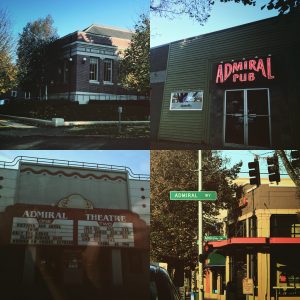 opponent of the Comprehensive Plan and the urban village strategy, Charlie Chong. It was a neighborhood that had a reputation of being tough on City staff (I guess that’s true of all the neighborhoods in the SW sector). One thing we solved was getting bus loading and off loading off of California and on to the strip of jointly owned by the Parks Department and Seattle School District property between the School and Hiawatha Park.
opponent of the Comprehensive Plan and the urban village strategy, Charlie Chong. It was a neighborhood that had a reputation of being tough on City staff (I guess that’s true of all the neighborhoods in the SW sector). One thing we solved was getting bus loading and off loading off of California and on to the strip of jointly owned by the Parks Department and Seattle School District property between the School and Hiawatha Park.
When the buses parked on the street, they took away street parking for people shopping at near by businesses and going to the park. We had to bring together the Park Department and the School district to do a complicated land swap that would allow buses to load and unload without encroaching on to park property, a violation of City law after a referendum passed strictly reducing non-parks use of parks property. It took many months of wrangling, but we got the buses off California and sorted out the property line issue between the School District and Parks.
West Seattle Junction
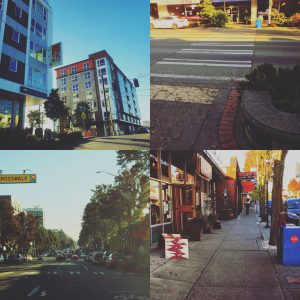 The Junction as it is called is a highly legible business district of about two blocks with iconic businesses and lots of street activity. It’s a bit more old school than Capitol Hill or the U District but has just about the same level of activity. The neighborhood wanted new sidewalks, crosswalks, curb bulbs, and street lighting. There wasn’t any money for that.
The Junction as it is called is a highly legible business district of about two blocks with iconic businesses and lots of street activity. It’s a bit more old school than Capitol Hill or the U District but has just about the same level of activity. The neighborhood wanted new sidewalks, crosswalks, curb bulbs, and street lighting. There wasn’t any money for that.
We combined forces with the Business Improvement Area (BIA) that raised funds from local businesses, the Neighborhood Matching Fund, the Cumulative Reserve Fund, and funding from an Urban Arterial Trust Account project. With help from City Light and phasing the project we also got the conduit for street lighting blended into the project as well. In the end, we were able to get funding for the light fixtures as well. It took about a year to complete, but it was a classic example of local business working with the City to make elements of the plan a reality.
Morgan Junction
Among the issues in Morgan Junction neighborhood that come to mind are traffic and parks. The Morgan 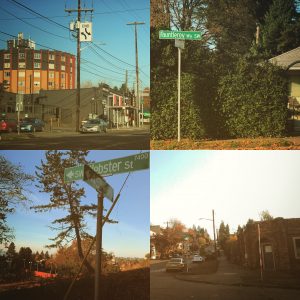 neighborhood is right on a corridor for Vashon ferry traffic which comes into the neighborhood from Fauntleroy and California, putting the junction of Morgan and California right in the middle of big surges of traffic. Lots of the work we did was on traffic calming and better organizing ferry loading especially during the busy summer months.
neighborhood is right on a corridor for Vashon ferry traffic which comes into the neighborhood from Fauntleroy and California, putting the junction of Morgan and California right in the middle of big surges of traffic. Lots of the work we did was on traffic calming and better organizing ferry loading especially during the busy summer months.
The neighborhood had a vision for what it called “The Green Crescent” which built on already existing right of way at the Eddy Street Ravine, the Lincoln Park Annex, and Lincoln Park itself. There were many issues that had to be worked through to get good pedestrian connections through the neighborhood and improve access to the ravine and Lincoln Park.
Delridge
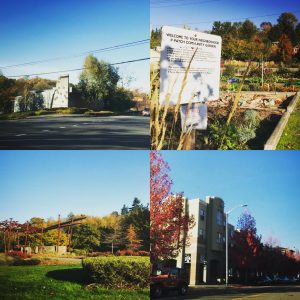 Delridge organized its plans around 4 nodes, the North Node and Delridge and Andover, the Campus Node at the site of the Old Cooper School, the Central Node at Puget and Juneau and Delridge, and the South Node, the site of a new police precinct and the site, at the time of a K-Mart with a huge parking lot. There was a lot of other projects in the neighborhood as well, including open space, P Patch and turning the Old Cooper School into an active arts and cultural center. Check out the Cooper School today and you’ll see it has become a reality.
Delridge organized its plans around 4 nodes, the North Node and Delridge and Andover, the Campus Node at the site of the Old Cooper School, the Central Node at Puget and Juneau and Delridge, and the South Node, the site of a new police precinct and the site, at the time of a K-Mart with a huge parking lot. There was a lot of other projects in the neighborhood as well, including open space, P Patch and turning the Old Cooper School into an active arts and cultural center. Check out the Cooper School today and you’ll see it has become a reality.
One other project that connected with the plans of the Westwood Highland Park plan was the Longfellow Creek Legacy Trail, a project that involved cleaning up the creek and providing more access to it along right of way and other access points from the steel plant in the north all the way to Roxhill Park at the city limit to the south. It was a project that had to cross many different difficulties along the way including skeptical property owners who didn’t want people walking near their backyards. In the end the trail was largely completed using existing public right of way.
Westwood Highland Park
The trail emerged in the Westwood neighborhood at the southern end of Delridge Way. Chief Seattle High School, 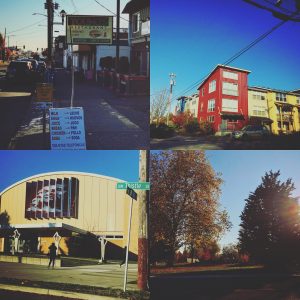 Denny Middle School, and the Southwest Recreational Center formed a campus including the athletic field used jointly by the school district and the community. At the time of neighborhood planning there was also a plan by the school district to implement a ballot measure that was funded to renovate school play fields.
Denny Middle School, and the Southwest Recreational Center formed a campus including the athletic field used jointly by the school district and the community. At the time of neighborhood planning there was also a plan by the school district to implement a ballot measure that was funded to renovate school play fields.
This wasn’t easy since the school district was on a different planning trajectory. There was conflict, and the neighborhood filed an appeal to the district’s permit. In the end, there was compromise and part of that was a set aside along the field of an accessible path for the Longfellow Creek Legacy Trail that would complete a key link between a section ending at the high school; that link would complete a link between Chief Sealth and Westwood Village to the south.
Georgetown
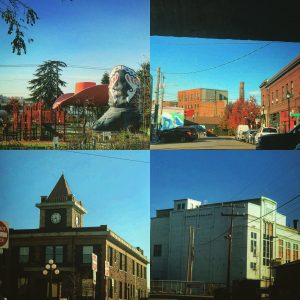 During the time I was an NDM Georgetown started to emerge as a neighborhood that was fighting for its existence into the thriving neighborhood it is today. At that time, it didn’t seem certain that Georgetown would make it. The neighborhood was, and still is, surrounded by industrial uses; trucks and trains and planes all swirl around the small residential and commercial area. In the late 90s there was serious talk about the King County International Airport condemning the whole residential area for its proposed expansion.
During the time I was an NDM Georgetown started to emerge as a neighborhood that was fighting for its existence into the thriving neighborhood it is today. At that time, it didn’t seem certain that Georgetown would make it. The neighborhood was, and still is, surrounded by industrial uses; trucks and trains and planes all swirl around the small residential and commercial area. In the late 90s there was serious talk about the King County International Airport condemning the whole residential area for its proposed expansion.
Amid all this the neighbors rallied. We managed to combine money raised from neighbors Parks Department Opportunity Grant Funding to try and turn a parcel of Washington Department of Transportation (WSDOT) property into a park and a location for the well known Hat and Boots. The Parks Department finally did acquire the land and money was found to relocated and rehabilitate the Hat and Boots that now sit in Oxbow Park. They said it couldn’t be done at the time, and now Georgetown seems here to stay.
The Greater Duwamish Manufacturing and Industrial Area
As I said, Georgetown is surrounded by industrial area, most of it in the plan of this area of the city that stretched from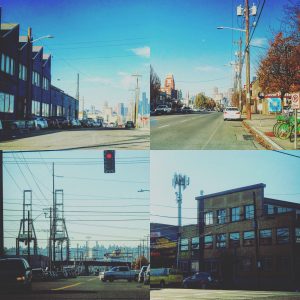 Beacon Hill to the east to Alki in the west, and downtown to the north and South Park in the south. While Georgetown had to fight against encroachment of industry on residential use, the industrial area was engaged in a profound fight over whether industrial land could hold out against the pressure of commercial and residential use. The new stadiums and school district head quarters didn’t make that any easier.
Beacon Hill to the east to Alki in the west, and downtown to the north and South Park in the south. While Georgetown had to fight against encroachment of industry on residential use, the industrial area was engaged in a profound fight over whether industrial land could hold out against the pressure of commercial and residential use. The new stadiums and school district head quarters didn’t make that any easier.
In the end, the City and its officials seem to have sided, mostly, with industrial use. It’s an ongoing battle. Many property owners with struggling businesses were trying to stay alive. But their operations were complicated by problems with freight mobility. Some wanted to upzone and sell their land for commercial use. But where would that end? At some point, the business next door would want to close up and sell too. This conversation continues today, with many older businesses struggling and the pressure of more and more traffic and commercial uses bearing down.
Next: Why was the neighborhood planning process successful?
Durkan Wins: Good News and Bad News for Housing
Jenny Durkan was elected Seattle’s first woman Mayor in almost a hundred years in a landslide last night over Cary Moon. It wasn’t even close. And Teresa Mosqueda won with a similarly convincing margin over rent control supporter Jon Grant, his second big lost in two years. Scott Lindsay, who had the support of many builders, was squashed by incumbent City Attorney Pete Holmes, who got more than 70 percent of the vote. There are many ways to look at this election and its results, and over the weeks ahead things will take a more clear shape, but here’s my initial thoughts what this election might mean for housing. Who won and who lost?
Winners
The Latino Community
As I have written before, I worked for almost a decade to create a Washington State that better reflected the growing Hispanic community. In the 1990s I worked to create a Hispanic Political Action Committee in Pierce County, and eventually ran for office myself. After last night Seattle will have three Latina’s on the the City Council, something that we would have thought impossible twenty years ago. Lorena Gonzalez, Teresa Mosqueda, and Debra Juarez are all accomplished, intelligent, and gifted politicians. I haven’t agreed much with them over the last two years and probably won’t in the years ahead, but their accomplishment is worth noting.
Still Juarez and Gonzalez have voted again and again with Councilmember Sawant, supporting unhelpful and counterproductive legislation impacting tenants and landlords. Neither have used their own political capital to form a new voice on housing issues. Perhaps Teresa Mosqueda having crushed Sawant and socialist backed Grant will feel like she’s got the ability to do that.
Downtown Lawyers and Developers
I won’t call the people behind Durkan’s campaign The Establishment because I’m not sure such a thing exists. I do know that the Greater Seattle Chamber of Commerce believes that Jenny Durkan will make developers build 20,000 units of subsidized housing. Clearly, downtown developers who fund the Chamber and backed Durkan know that when they said “developers” the didn’t mean themselves. Durkan and the downtown crowd have been relentless in pushing Mandatory Inclusionary Zoning (MIZ) even now that they don’t have to — all the Downtown and South Lake Union upzones have passed. Maybe now that the election is over, they’ll cut the rest of us lose from the boondoggle which will make many projects outside of Downtown infeasible, raise prices to make them work, and in the end will be found in violation of state law.
The Non-Profit Housing Industrial Complex
Big spending non-profit housing developers flocked to Durkan’s camp because they believed she’d carry on former Mayor Murray’s MIZ program without asking too many questions. I think they’re right. Durkan was fond of saying, “We need more affordable housing” rather than “we need more housing so that it will be affordable.” Look for the non-profits to fight even harder to wring money out of the production of market rate housing.
Neighbors Angry About Homeless Camps
Durkan did have a back bone about one thing: she wouldn’t say she’d end the sweeps of homeless camps. Instead, she redefined the term in a pretty convincing way. She’d often say, “They aren’t sweeps at all!” and she’d talk about how much work went into moving people out of public areas and rights of way with services and compassion. But still, she sounded a tone not unlike current Mayor Burgess; a line has to be drawn somewhere. It’s likely that efforts will continue to remove campers and camps from public areas in manner consistent with what Mayor Murray had been doing already.
Losers
“Urbanists”
As I pointed out, so called “urbanists” went big for Cary Moon. While its still impossible to know what an urbanist is, we do know that they gravitated toward her message of “missing middle” housing. The problem is that the urbanist seems to think that this kind of housing — townhouses, courtyard housing, and flex housing — is built by the Keebler Elves or Smurfs. Urbanists tend to live in a world of ideals in which elected officials do the “right thing” in spite of economic reality, specifically angry neighbors guarding the equity in their single-family homes from lower prices from increased production and the fact that housing is a product financed by banks and investors. While we do need housing that is somewhere between single-family housing and apartments, Moon and her urbanists adherents seem blind to the fact that it is being built already — by small and medium sized builders in the low-rise zones.
Big Foot Hunters and The Stranger
The Stranger’s Election Control Board or whatever it’s called got its ass kicked last night. It was a long time coming. There is no doubt that The Stranger, Seattle’s only alternative paper, carries a lot of weight in the town. They believe (with good reason) that they elected Sawant, and so the stunning defeat of Moon and Grant means that many of their loyal readers consciously ignored their “cheat sheet.” The Stranger will say that they had dissenters who supported Mosqueda. That’s true, but what about Durkan? The Stranger hated Durkan and made it clear. And the whole notion supported by resident throw back deconstructionist and performance artist Charles Mudede that Chinese mobsters are buying up all the housing and leaving it empty to launder money was also rejected — and I think that wasn’t an accident. People get that the notion is nonsense.
The Electoral Process
I’ve never seen candidates, at any level including the 2016 Republican debates (“My hands are fine Little Marco!”), in which candidates pandered and were more humiliated than this one. I was stunned when Nikkita Oliver basically said that Jenny Durkan had lived all her life working for the “patriarchy” during the People’s Party debate. Durkan should have rebuked that characterization sternly and firmly, but she just went along with it. As Donald Trump would say, “believe me,” I don’t have a lot of respect or admiration for politicians, but there comes a point when one’s personal integrity is worth more than some dumb office. Candidates in Seattle seem to be less and less worried about the gauntlet of abuse dished out by lefties, socialists, communists, anarchists, and every other variety of people angry about something in order to get elected. It’s part of Sawant’s legacy and it is unraveling the ability of elected leaders to make rational decisions about housing policy.
Winner or Losers?
Angry Neighbors against MIZ
Angry neighbors are amusing. They stomp around town upset about traffic and the big buildings and all the techies and development and they chase the young kids off their lawns. They also believe they are the most downtrodden and exploited and crushed underfoot people in Seattle as they water their lawns with a copy of the New York Times under their arms. Who is keeping them miserable in their million dollar craftsmen? Amazon and greedy developers and land lords. That’s right, angry neighbors spend lots of time worrying about how much rent a single mom is paying for rent. Why? Well, it’s a red herring. They could care less. But from their hippie days they knew that it had to be about the poor; they know they’re not. It’s unclear whether Jenny Durkan (who is kind of like these folks in many ways, at least demographically) will listen to them or whether she’ll join Councilmember Johnson and plow them down. It’s a risky thing to do.
Builders, Developers, and People Who Manage Housing
So many builders and developers and people in the business told me, “Durkan is better” or “She’s the lesser of two evils” or more frequently, “She’s gotta say all that nonsense. Just wait till she’s elected.” Well, I’ve never liked that kind of candidate, the wink-wink, nudge-nudge candidate that makes you believe its all just a song and dance. Well why won’t that candidate become an elected official that gives us a song and dance later on? On the other hand, a experienced lawyer said, “Durkan will be able to stand up to Lisa Herbold.” Now that, I think is true. Herbold is the smartest and most principle driven person on the City Council. Sawant is an artist. Art is important. But it is different than policy. Herbold really knows what she’s doing when it comes to making policy. I think it is true that Moon would have likely been easier to push around than Durkan. Maybe. I don’t know. Whether Durkan will take another look at MIZ is hard to say. Will she give us high level people to work on nuts and bolts permitting issues? Maybe. We’ll have to see.
A City on the Brink
We’re in real trouble. Unfortunately, when it comes to housing, the people who Durkan has been listening to think the world consists of what they see outside their downtown conference room windows. They really aren’t concerned about the larger economic issues driving housing demand. As I’ve said before, a Vulcan lobbyist told me, “We don’t build single-family housing.” Right. Vulcan doesn’t. But their employees live in single-family and so do many Amazon employees that work in Vulcan built offices — that is if they can find the housing. Downtown is short sited. Neighbors are suspicious and worried about the wealth in their homes. Advocates for the poor are bitter and angry at people who are making money. The press is mostly uncurious about the Grand Bargain and why big shot developers downtown would want to pay fees on building housing. And elected officials behave like 5 year olds playing soccer; clustered around the ball forgetting that the point is to spread out, pass, and make a goal. Meanwhile 1000 people move here everyday and thousands will sleep in tents, under bridges, and in their cars.
The Way Back Machine: Neighborhood Planning and the Beacon Hill Station
This is part of a longer series looking back at 20 years of land use, planning, and housing policy history leading up to the state we’re in today. Last time it was the South Park Bridge. Now, here’s the story of a neighborhood win that took many years to achieve.
Way Too Deep: The Beacon Hill Station
Back in the 1990s light rail, to me anyway, seemed like a far off piece of science fiction. But the neighborhood planning process wrapped in planning for the station since it would be located right in the middle of the urban village. Sound Transit, at that time I think called the Regional Transit Authority (RTA) was busily putting together a plan for the length of the whole line which would start downtown and end near the airport going through the Rainier Valley along the way.
Light rail in the region has been typified by a usual pattern: battles for funding at the state and regional level and then at the ballot, getting the funding based on a general plan and alignment, then bitter battles all along the line over every conceivable detail of how the station would fit into the local circumstance and situation.
Beacon Hill was no different, except there was no station planned (some of the following material is reworked from a post I wrote for Sightline in 2009).
The measure that created what we now call light rail and Sound Transit passed in 1996 and that didn’t mean that light rail as we now know it was a certainty. There were 8 more years of wrangling about the alignment, mitigation, and whether the line would be at grade or in a tunnel—among thousands of other details.
One set of advocates pushed for the tunnel to run through the Rainier Valley to bring jobs and economic development to the area. Then, once the choice had been made to put it there, another group called Save Our Valley arose, demanding that the line be put underground or canceled. They feared that the construction would ravage neighborhoods and the rails would slice communities in half. They sued Sound Transit—the agency that was created by the voters to make light rail happen—and put up signs throughout the proposed route that said “Tunnel or Nothing!”
In February of 1995, I moved to an apartment on Beacon Hill and got involved in neighborhood planning. A group of dedicated people pushed hard for a station on Beacon Hill even though Sound Transit, at the time, said a station there would be too deep and too expensive. The group persisted and finally got a station worked into the plan. Shortly after that group collapsed from exhaustion, a new group arose on Beacon Hill opposing the station claiming that it would destroy the character of the neighborhood.
The battle over whether or not there would be station or not is worth looking at a bit more closely. There was this guy named Warren Yee who lived in the neighborhood and made it his cause to get a station. He was indefatigable on the subject, and worked to get the station in the neighborhood plan in spite of being told over and over again, “It’s too deep!”
In fact, at the time there was no station in all of North America as deep as the one that would be needed to connect the train, which would pass beneath Beacon Hill, to the neighborhood above. The closest thing was the station at the Portland Zoo, which I visited sometime during the discussions to get a sense of what we were dealing with.
Again and again light rail officials and planners would effectively pat us all on the head and explain the huge problems and expense associated with a station on Beacon Hill.
It’s not going to happen.
But what if it did?
It’s too expensive.
What if funding was found?
There isn’t any. Do you read the papers?
Let’s plan anyway.
[Eye roll] OK. Fine. Plan your little hearts out.
So the neighborhood planned and thought about what a station there would be like. The City created a whole group and staffing for Transit Oriented Development (TOD) around the station.
I’m hazy on the exact timing of how the neighborhood planning work and the work around TOD came together, but Beacon Hill was in the TOD planning mix as well as neighborhood planning. Zoning was discussed and we looked at ways to created lots of density on the blocks surrounding the station. The new library for a brief time was also possibly going to be positioned near the station that would have been across from the Red Apple grocery store.
Again, there was conflict. Some pushed against the density. Some didn’t like where the station’s vents were going to be. And we hassled and fought bitterly over where the library was going to be.
Then we found out that there was enough funding to build a “station shell” for Beacon Hill. That meant that there wouldn’t be an actual station, just the ability to build one later if additional funding became available. Then the word came, yes, Beacon Hill would get a station.
Like South Park, it was all about persistence. Yes, a new station would bring a bunch of new problems to the neighborhood (“What about Perry Ko’s?”) and there would be a whole new set of unknowns created by the arrival of a station. But the neighborhood got what it has asked for simply by asking again and again and planning as if the dream would come true.
